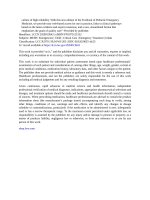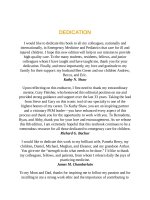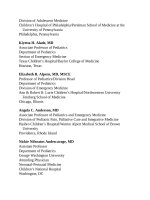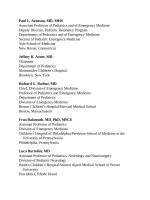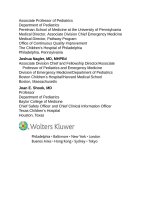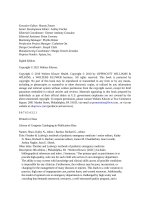Pediatric emergency medicine trisk 0831 0831
Bạn đang xem bản rút gọn của tài liệu. Xem và tải ngay bản đầy đủ của tài liệu tại đây (43.9 KB, 1 trang )
In children ≥2 years, high-risk clinical features include altered mental status,
focal neurologic deficits, signs of a skull fracture, or seizures. Children with any
of these features should be referred for emergent imaging. Additional findings
concerning for increased risk of ICI include LOC, persistent vomiting,
persistent/progressive or severe headache, or severe mechanism of injury. In
children with one of these features (or two mild features), observation (versus
emergent imaging) may be considered based on the clinical scenario, provider
experience, and parental preference. If observation is initiated, the child should be
observed for 4 to 6 hours for any signs of clinical deterioration, which would
include neurologic abnormalities, mental status depression, persistent vomiting,
or increasingly severe headache. A CT scan should be obtained if these signs or
symptoms develop. As previously stated, discrete abnormalities may be identified
on CT scan, but if the scan is normal, then the child has suffered a concussion or
extracranial injury. It is important to note that symptomatic children without
evidence of TBI on CT scan may still suffer from persistent and/or debilitating
symptoms that require admission or close outpatient follow-up.
